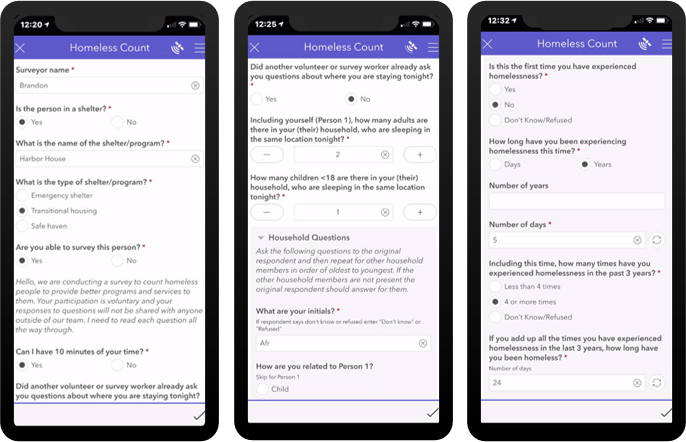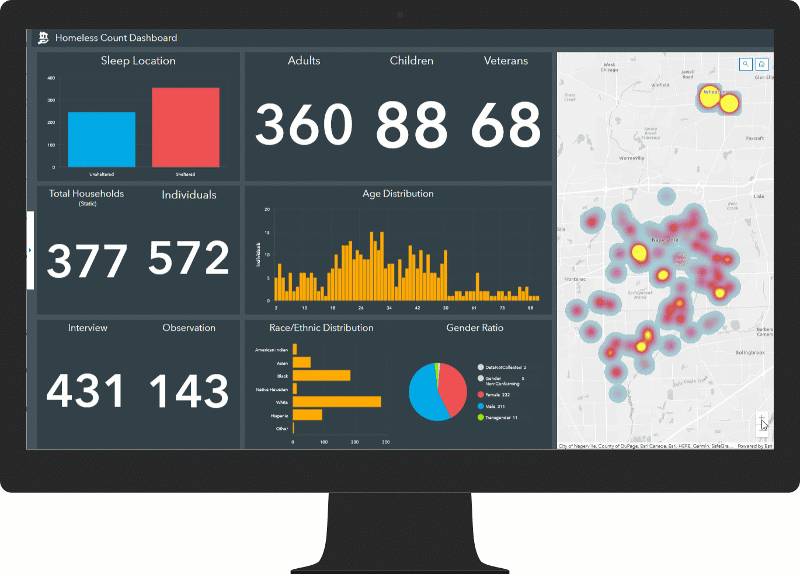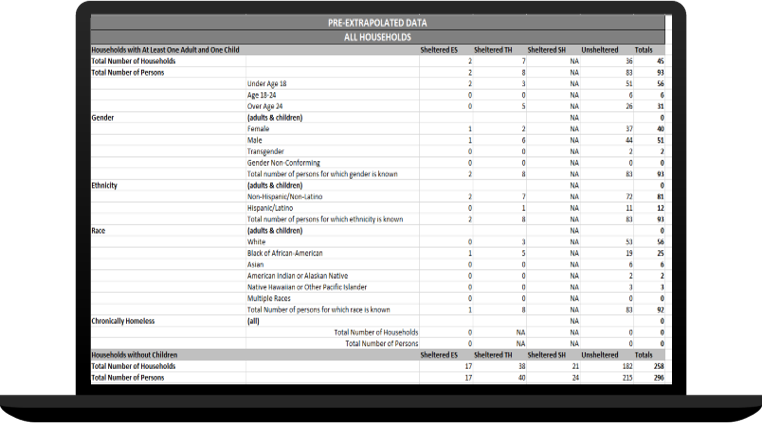Homelessness is a complex problem that is typically brought on by personal hardship, unemployment, and the lack of affordable housing or mental health services. It is a human tragedy that has been exacerbated by the coronavirus disease 2019 (COVID-19) pandemic.
The increase in homelessness is straining social resources and the capacity of local governments. At the same time, health and human services agencies are dealing with increasing service demands, limited access to technology and real-time data is impacting program effectiveness. This lack of information makes it difficult to determine whether strategies are effective, and policy changes are having an impact on homelessness.
The Department of Housing and Urban Development (HUD) requires each Continuum of Care (CoC) to conduct a Point-in-Time (PIT) each year in the last ten days of January. This count of sheltered and unsheltered people helps communities understand the extent of homelessness and provides a foundation for social programs and funding. that. Many communities did not perform the counts during the height of the COVID-19 pandemic, making this next count extremely important.
On November 19, 2021, an updated version of the Homeless Point-in-Time Count solution was released. This was a relatively minor update, but did include updated choices for demographics, ethnicity and gender in the Homeless Count Survey and to align with the HUD Data Dictionary.
Conducting point-in-time counts
Conducting these counts on one night can take a lot of resources, thus in many cases volunteers are used to help canvas the area and perform the surveys. Each volunteer can utilize the Homeless Count Survey included with the solution to interview people experiencing homelessness to be guided by a series of questions provided by HUD. If a person cannot be interviewed, observation data can be collected. This survey can be easily extended with community based questions, such as awareness about local resources. Communities wanting to track volunteer progress and ensure data is not exposed can utilize ArcGIS Hub Premium, with community users to grant access to the survey.

Visualizing point-in-time data
Some CoC’s activate their Emergency Operations Center on the night the count occurs. This helps managers track the progress in real-time and can help ensure areas that are not being canvassed can be covered before the night is over. The solution provides a Homeless Count Dashboard so that managers can visualize this information in real-time. After the count, the dashboard is interactive to select values such as gender or age to see how the geography changes.

Generating Reports for HUD
HUD has specific guidelines that govern how CoC communities must report the results of their point-in-time counts. After the assessment, the program manager can then generate reports meeting the HUD requirements using the HUDReport Notebook.

Additional Resources
Homelessness counts are typically conducted on a single night in January. However, this doesn’t necessarily reflect the extent of ongoing homelessness activity in a community. The Homeless Risk Reduction Solution can be used to identify where regular reports of homeless activity and assess overall risk areas. Finally, the Homeless Outreach solution can be used educate the public and help individuals experiencing homelessness find available resources.
Learn more about the Homeless Point-in-Time solution and how you can quickly deploy this solution on the ArcGIS Solution site. For questions and feedback, chat with us on Esri Community or contact Esri Support Services.



Article Discussion: